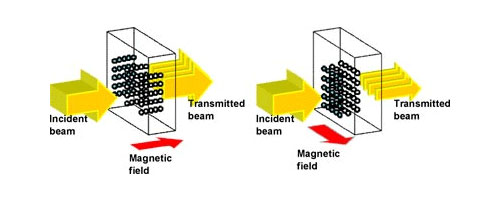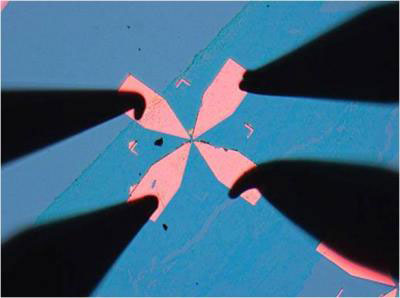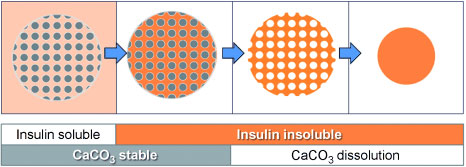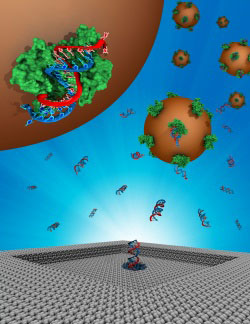Researchers at the Massachusetts Institute of Technology (MIT) and Brigham and Women's Hospital have developed a nanoparticle that can deliver precise doses of two or more drugs to prostate cancer cells. Such particles, say the researchers, could improve the effectiveness of chemotherapy while minimizing the side effects normally seen with these drugs.
Oct 27th, 2010
Read more
Though targeted nanoparticle-based imaging agents and therapeutics for diagnosing and treating cancer are making their way to and through the clinical trials process, researchers still do not have a good understanding of how nanoparticles reach tumors and how they then bind to and enter the targeted tumor. To overcome that knowledge deficit, two teams of investigators, both part of the Alliance for Nanotechnology in Cancer have undertaken studies aiming to track nanoparticles as they move through living animals.
Oct 27th, 2010
Read more
The National Nanotechnology Coordination Office (NNCO) is pleased to announce the appointment of Dr. Sally Tinkle as the Deputy Director of the NNCO and Coordinator for Environment, Health, and Safety (EHS).
Oct 26th, 2010
Read more
The National Institute of Standards and Technology (NIST), in collaboration with IEEE, is inviting teams currently engaged in microrobotic, microelectronic or microelectromechanical systems (MEMS) research to participate in the NIST Mobile Microrobotics Challenge 2011. The competition will be held as part of the IEEE International Conference on Robotics and Automation, May 9-13, 2011, in Shanghai, China.
Oct 26th, 2010
Read more
 National Institute of Standards and Technology (NIST) physical scientist Henri Lezec and Federico Capasso of Harvard have received the Julius Springer Prize for Applied Physics 2010 for their 'pioneering achievements in nanoscale physics and applications'.
National Institute of Standards and Technology (NIST) physical scientist Henri Lezec and Federico Capasso of Harvard have received the Julius Springer Prize for Applied Physics 2010 for their 'pioneering achievements in nanoscale physics and applications'.
Oct 26th, 2010
Read more
Scientists from across Missouri will meet Wednesday, Oct. 27, at Washington University in St. Louis to learn about the latest advances in nanotechnology and opportunities for commercializing them.
Oct 26th, 2010
Read more
 Japanese scientists report on a new biosensing protocol based on monitoring changes in optical transmittance of a solution containing self-assembled chains of functionalized magnetic beads being rotated by an external magnetic field.
Japanese scientists report on a new biosensing protocol based on monitoring changes in optical transmittance of a solution containing self-assembled chains of functionalized magnetic beads being rotated by an external magnetic field.
Oct 26th, 2010
Read more
Researchers in Japan successfully demonstrate the neural recording capability of micrometer sized VLS-silicon wires -'Toyohashi Probe' - using the retina of a fish.
Oct 26th, 2010
Read more
From innovations that enable improved health care and clean energy technologies, to the advent of exciting video games and new crime-solving techniques, the growing impact of nanotechnology on society will take center stage when the College of Nanoscale Science and Engineering of the University at Albany holds its third annual celebration of 'NANOvember'.
Oct 26th, 2010
Read more
Selbstorganisationsprozesse chemischer Bausteine sind die Basis fuer viele biologische Vorgaenge, zunehmend stossen sie auch auf Interesse im Bereich der Materialsynthese. Beispielsweise um hochgeordnete Nanokomposite oder hochporoese Materialien mit besonderen Eigenschaften herzustellen. Forscher stellen nun einen neuartigen, sehr vielseitigen Ansatz vor, mit dem die Synthese einer neuen Familie bioorganisch-anorganischer Nanoverbundmaterialien im grossen Massstab gelingt - mit bisher unerreichter Kontrolle ueber die Beschaffenheit und Struktur der Produkte.
Oct 26th, 2010
Read more
If you say 'synchrotron' to most scientists, they will picture an immense, highly expensive and rather rare facility designed to produce highly intense beams of light, such as the UK's Diamond Light Source that boasts a 500 metre circumference and cost GBP 263 million (EUR 297 million) to build. However, that could soon change, as EU-funded scientists have created a table-top device capable of producing synchrotron X-rays that are as intense as those produced by some of the world's largest X-ray facilities.
Oct 26th, 2010
Read more
 Researchers at Rensselaer Polytechnic Institute use water to open, tune graphene's band gap.
Researchers at Rensselaer Polytechnic Institute use water to open, tune graphene's band gap.
Oct 26th, 2010
Read more
Scientists at Helmholtz-Zentrum Berlin (HZB) have developed a method that uses the magnetic fingerprint of the charge-carrying particles to reveal exactly how electricity is being lost. They did so by cleverly manipulating the magnetic properties of these particles.
Oct 26th, 2010
Read more
Der Senat der Fraunhofer-Gesellschaft entschied am Dienstag, den 19. Oktober 2010, dass die Einrichtung fuer Elektronische Nanosysteme ENAS in Chemnitz zum 1.1.2011 ein eigenstaendiges Institut wird.
Oct 26th, 2010
Read more
 Proteins are an interesting class of drugs because they demonstrate high biological activity and are highly specific in their effects. It has become possible to produce more and more proteins with tailored pharmacological properties; however transport and controlled release of the protein drugs in the body have remained a challenge. Researchers have now introduced an alternative to the usual transport agents, such as liposomes: by using a simple, inexpensive, gentle process, they were able to produce pure protein microspheres of uniform size.
Proteins are an interesting class of drugs because they demonstrate high biological activity and are highly specific in their effects. It has become possible to produce more and more proteins with tailored pharmacological properties; however transport and controlled release of the protein drugs in the body have remained a challenge. Researchers have now introduced an alternative to the usual transport agents, such as liposomes: by using a simple, inexpensive, gentle process, they were able to produce pure protein microspheres of uniform size.
Oct 26th, 2010
Read more
 Researchers at the University of Pennsylvania have developed a new electronic method for detecting microRNA isolated from living cells.
Researchers at the University of Pennsylvania have developed a new electronic method for detecting microRNA isolated from living cells.
Oct 26th, 2010
Read more






 Subscribe to our Nanotechnology News feed
Subscribe to our Nanotechnology News feed